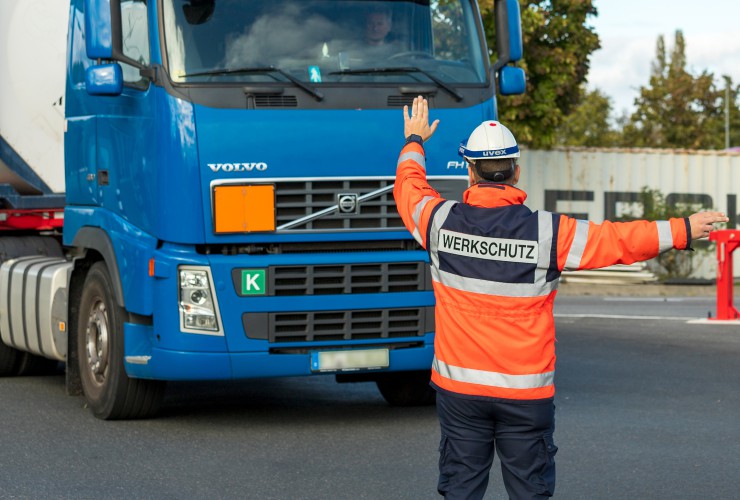In the run-up to the IFOY Award ceremony in Dortmund on June 22nd, Logistics Business features all the 2023 finalists and shares the verdict from the IFOY test conducted during the evaluation by an expert jury in March. Our latest entry is the FFZ-KPI software solution from Mobile Easykey.
With the Industrial Truck Key Performance Indicator developed by Mobile Easykey, users can see the performance of their intralogistics industrial truck fleet at a glance. This makes the time-consuming analysis of Excel tables and individual parameters a thing of the past. The Industrial Truck Key Performance Indicator is based on the OEE as an industry indicator for production plants. With the hardware and software developed, Mobile Easykey has expanded this industry indicator for moving machines and created a novelty in intralogistics analysis with the KPI.
IFOY category: Intralogistics Software
IFOY Test Report
The Industrial Truck, in German Flurförderzeug (FFZ), Key Performance Indicator, or FFZ-KPI for short, from the company Mobile Easykey enables the fleet efficiency of the intralogistics fleet to be determined at a glance. The prerequisites for this are a clear key figure and the easy-to-read visual traffic light system.
The FFZ-KPI is made up of four measurement parameters that are calculated together in an algorithm. The following are taken into account: the industrial truck is powered up, the industrial truck is logged on, the industrial truck is in use and the industrial truck is being driven with a load.
Fifty percent of logistics costs are based on the processes in a warehouse, and thus the industrial truck fleet also contributes a large share of the costs incurred there. The FFZ-KPI provides a manufacturer-neutral view of the performance of the fleet. It is manufacturer-independent, comparable and can be calculated on variable requirement parameters. When collecting the analysis data, the industry and the cycles of the processes on site are taken into account – because the process flows of a warehouse created on the drawing board vary greatly from warehouses that have grown organically. Reliable data can be collected per shift, per month, per fleet and also per vehicle or vehicle type.
From the collected data, clear conclusions can be drawn for fleet optimisation and future fleet deployment. Fleet managers and those responsible for the fleet can thus see the overall performance of the fleet at a glance. This is an important building block for making optimum use of the existing intralogistics fleet.
The FFZ KPI is based on the cross-industry OEE figure. This reflects the overall equipment effectiveness as a key business figure. The OEE figure is based on immobile plant and machinery. The FFZ-KPI adds further calculation parameters to the OEE key figure, which makes the key figure calculable for mobile plants.
IFOY test verdict: Intralogistics account for half of logistics costs and almost no warehouse can do without industrial trucks. However, the costs within intralogistics outside of the supply chain are often neglected because meaningful and clearly assignable data are missing. Consequently, there is great potential for savings in modern and efficient fleet management. The main advantages of the Industrial Truck Key Performance Indicator are the manufacturer-independent data and the possibility of cross-manufacturer data analysis. In addition, the KPI is easy to read due to the visual traffic light system. This makes the time-consuming analysis of Excel tables and individual parameters a thing of the past. The FFZ KPI is based on the OEE as an industry indicator for production plants. With the hardware and software developed, Mobile Easykey has expanded this industry indicator for mobile machines and created a novelty in intralogistics analysis with the KPI. Another important component is the cross-industry use of the KPI.
IFOY Innovation Check
Market relevance: The FFZ-KPI software is well suited for systematically evaluating the use of industrial trucks in larger fleets and visualising it in key figures. This provides the user with a data basis for drawing conclusions as to whether the availability and use of his trucks can be responsible for an influence on his operational effectiveness. In production companies, this is often referred to as overall equipment effectiveness (OEE). Since companies with significantly large fleets of FFZs and a focus on OEE are certainly relevant, but do not affect the overall FFZ market, the market relevance can be rated as good.
Customer benefit: The condensation and visualisation of the usage and availability figures is well solved for a regular application. The customisation options for individual usage profiles of individual FFZs and the design of the dashboard testify to a high level of competence in the development of user-friendly user interfaces. Overall, however, a high level of effort is required for data collection and aggregation, which is the basis for the determination of key figures. Overall, customer benefit can be rated as good.
Novelty / Innovation: Mobile Easykey has been offering the core functionality of the Easykey software for more than 20 years, which means that it is not new or innovative in the strict sense of the word. The software is the result of a consistently pursued evolution, which has led to a well-developed and contemporary software.
Functionality / Type of Implementation: The Easykey software offers the essential functions, properly prepared and user-friendly, to monitor large FFZ fleets and to condense key figures on their use and availability. It is technologically up-to-date, intuitive, and easy to adapt to the needs of different user characteristics and needs well.
Verdict: Mobile Easykey has been offering the core functionality of the Easykey software for more than 20 years, so it is not new or innovative in the strictest sense. However, the software is up to date and can be well adapted to the needs of different user characteristics and needs.
Market relevance +
Customer benefit +
Novelty / Innovation –
Functionality / Type of implementation +
[KEY: ++ very good / + good / Ø balanced / – less / — not available]






